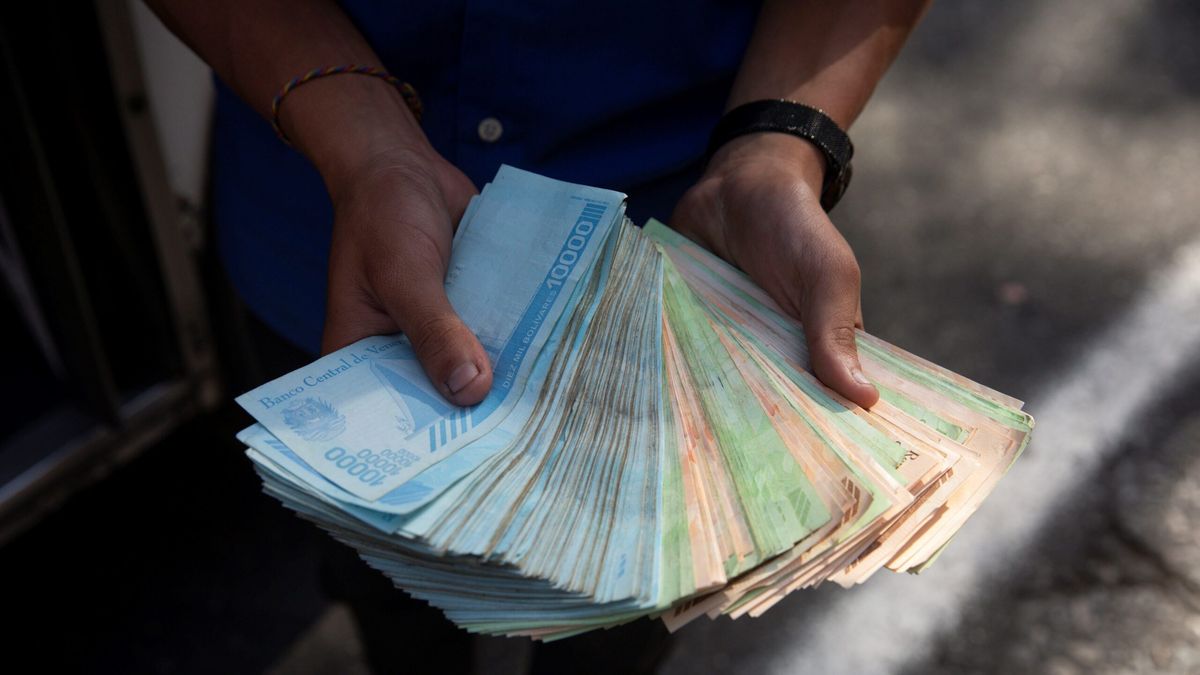
[ad_1]
“Anything expressed in national currency will be divided by a million”, communicated the Central Bank of Venezuela (BCV) during the announcement the third conversion carried out by this country in crisis since 2008, with which 14 zeros in total have been eliminated from the bolivar in 13 years.
Accompanying the measure, which entered into force this Friday, a new monetary cone hits the street: a coin of a bolivar and banknotes of 5, 10, 20, 50 and 100. The maximum cut will be equivalent to approximately 24 dollars according to the rates of the BCV.
The old family’s biggest bill, a million, is barely 25 cents on the dollar and doesn’t even buy a candy. It will remain in circulation with the new ones for a few months.
The situation reflects “the weak capacity that the economic actors of Venezuela had to control hyperinflation”, a phenomenon which “has greatly impoverished the population”, Luis Arturo Bárcenas, an economist at Ecoanalítica, told AFP.
Three in four Venezuelan households live in extreme poverty, with insufficient income to cover their nutritional needs, according to the results of the National Survey on Living Conditions, coordinated by one of the country’s main universities, published on Wednesday.
The first reform of the bolivar was initiated by the late former President Hugo Chávez (1999-2013), who removed three zeros from the currency.
His successor, Nicolás Maduro started a new one in 2018, with five fewer zeros, and now he’s taking six more zeros out of the equation three years later.
Inflation, projected at 1,600% in 2021 by Ecoanalítica, It has been destructive and combined with gigantic devaluations and constant depreciation, 73.34% this year alone, it has emptied the bolivar of value.
All of this has led to informal dollarization, as Venezuelans attempt to protect their income by using foreign currency, what Maduro has called an “exit valve” in a country in recession for eight years.
Although the socialist leader did not formally lift the exchange control imposed in 2003, he was forced to relax it due to the collapse in the country’s income caused by the collapse of its oil industry and restrictions on funding due to US sanctions trying to oust him from power. Local banks, despite the limitations, are allowed to move dollars after a 15-year ban.
Two-thirds of transactions in Venezuela are made in dollars, according to Ecoanalítica. In the 24 hours before the conversion, the dollar soared on the black market that emerged in response to exchange controls, although it remained stable in the official BCV prices.
Parallel exchange rates soared from 4.3 million bolivars per dollar to over 5 million.
Fearing operational problems due to the conversion, many businesses in Caracas have limited transactions in bolivars, the vast majority with debit cards or bank transfers due to lack of liquidity.
The Maduro government has called for calm. “(The bolivar) will not be worth more, it will not be worth less, it is only a monetary scale that we apply by removing six zeros to facilitate transactions”Vice-President Delcy Rodríguez said on Monday.
Maduro talks about “digital bolivar” by referring to the converted bolivar, requesting the total “digitization” of payments.
Conversions were common in Latin America, especially during times of hyperinflation in countries like Argentina, Brazil or Peru in the 1980s and 1990s.
Source link
 Naaju Breaking News, Live Updates, Latest Headlines, Viral News, Top Stories, Trending Topics, Videos
Naaju Breaking News, Live Updates, Latest Headlines, Viral News, Top Stories, Trending Topics, Videos